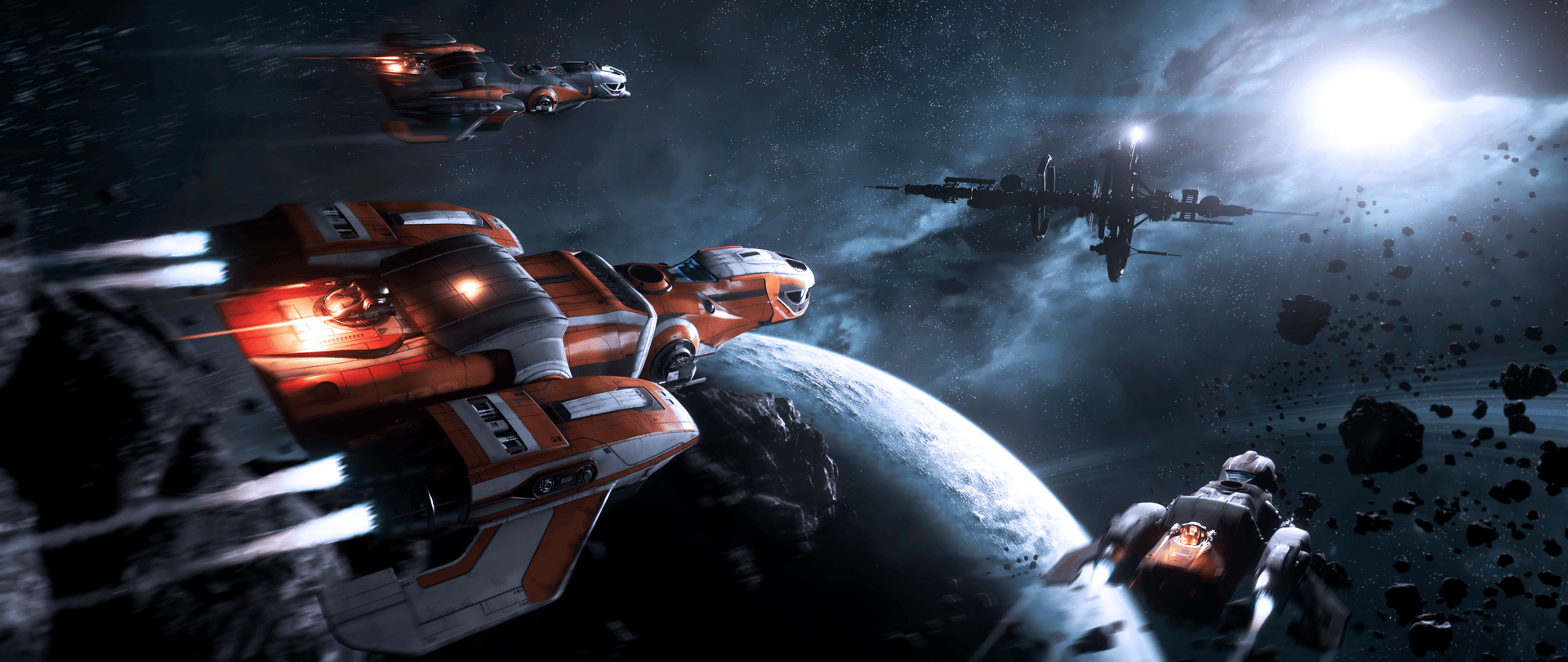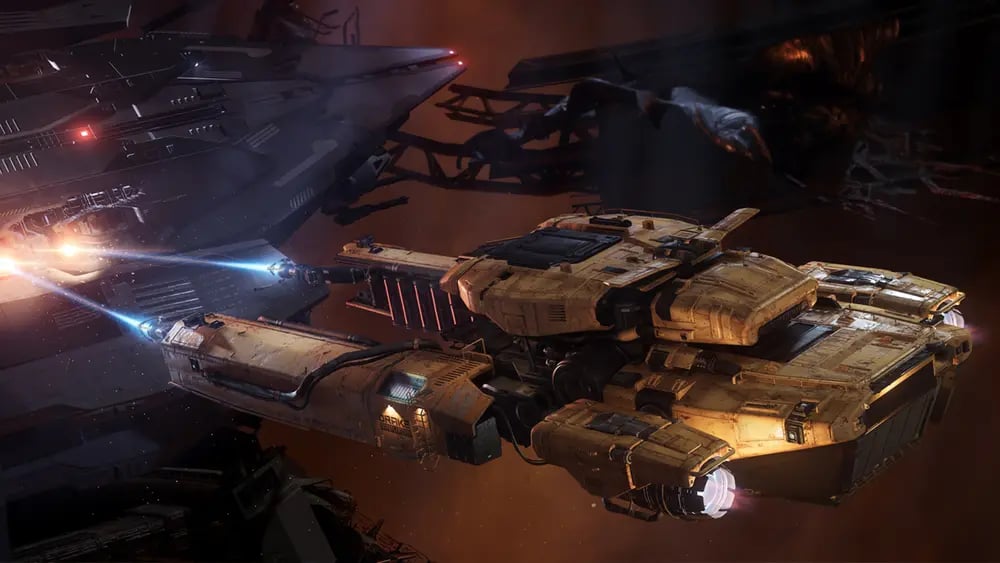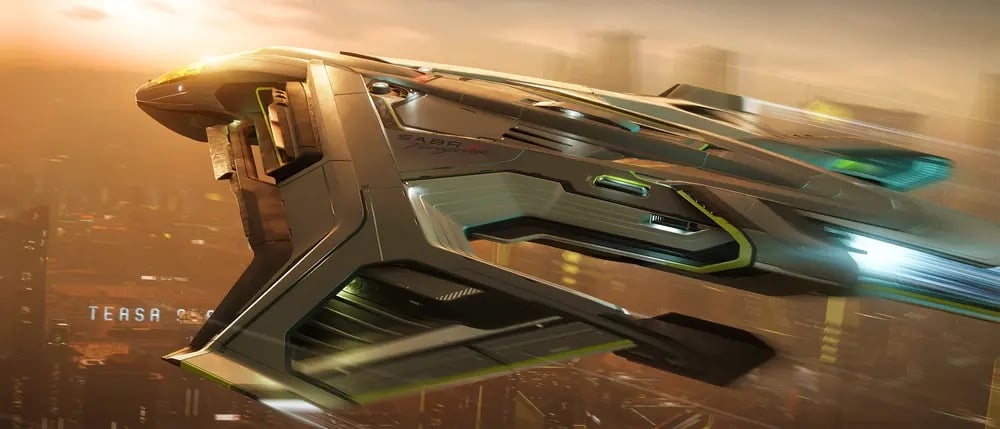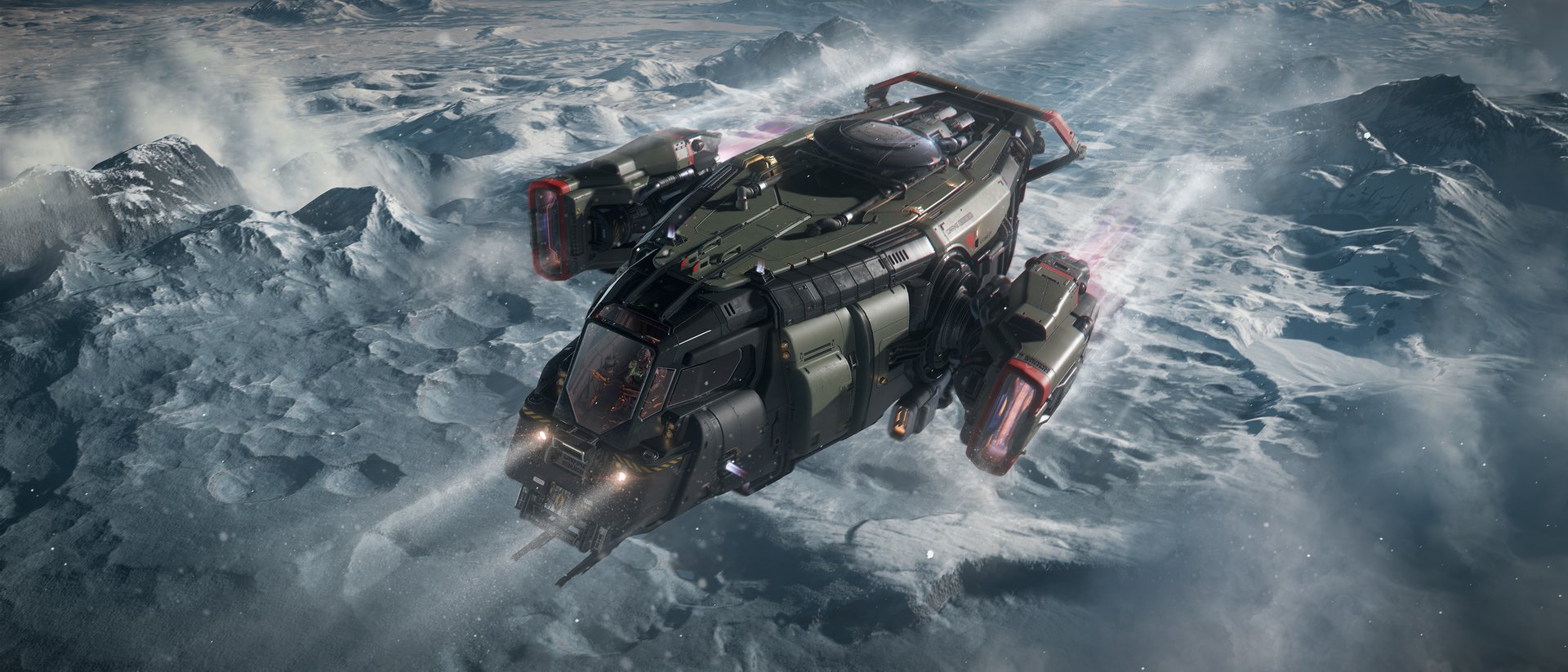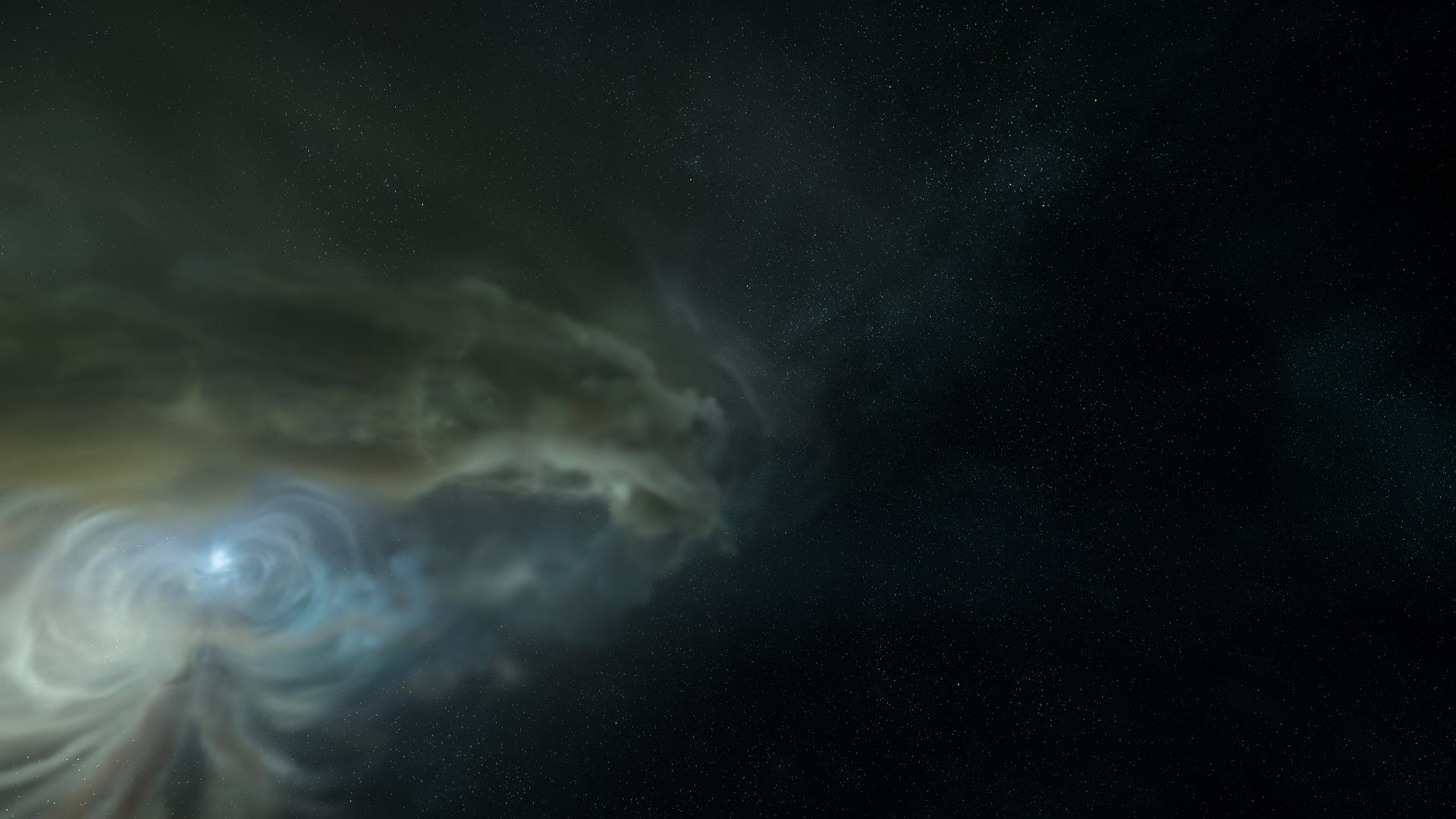Introduction: Welcome to the Space Sim Showdown
Space simulation fans have never had it better than in 2025. On one side we have Elite Dangerous, a mature and polished galaxy-scale MMO that’s been running strong since 2014. On the other side is Star Citizen, the massively ambitious space MMO that’s still in active development but already offers breathtaking scope and immersion. Both games feature piloting starships, trading, combat, and exploration, but they take very different approaches. This guide will walk you through the key differences between Elite Dangerous and Star Citizen so that as a new space pilot you can choose the universe that’s right for you. We’ll compare the size of their worlds, the style of gameplay, graphics and immersion, and most importantly how to actually get started in each. Let’s strap in and take off!
Universe & Scale: The Milky Way vs. Stanton
One of the first things new players notice is the scale of each universe. Elite Dangerous is built on a 1:1 simulation of the entire Milky Way – that’s 400 billion star systems, each with planets, moons, and a dynamic economy. In practice almost all of those systems are procedurally generated and rarely visited, but the sheer size means you could fly in one direction for decades and still not run out of stars. Elite’s galaxy includes realistic star types and nebulae, and a living political system (factions, commerce-driven conflicts, the ongoing saga of alien Thargoids). All players share this single galaxy, so every trader, pirate, and explorer you meet is somewhere out there in the same star chart. The result is an overwhelming sense of scale – thousands of light-years sprawling around you.
In contrast, Star Citizen’s universe is currently much smaller but growing. As of 2025, the playable area is mainly the Stanton system – a single star with five large planets and dozens of moons. Each planet has one or more hubs you can actually visit, with cities, outposts, and landing zones. The developers have been steadily expanding beyond Stanton; for example, the Pyro system is being added via Alpha 4.x, complete with new jump points and dangerous solar activity. In the long term, Star Citizen’s roadmap includes connecting multiple star systems and “server meshing” to create a true multi-system MMO galaxy. But for now, new players will explore a single solar system (albeit a very large and detailed one) that feels rich and filled with activity.
Key point: Elite Dangerous offers the entire galaxy to explore (albeit most of it is empty space), whereas Star Citizen offers a highly detailed region. Stanton is smaller than a few well-traveled sectors of Elite’s galaxy, but what’s there in Star Citizen is crafted to feel alive – densely populated space stations, planetary cities, and diverse biomes. In short, ED = breadth (vast cosmos), SC = depth (detailed world).
Graphics and Immersion: Procedural Beauty vs. Photorealism
The visual style of each game reflects its scope. Elite Dangerous uses procedural generation to create a huge and beautiful galaxy. It renders crisp stars, floating quantum nebulae, and realistic planetary orbits. The lighting is dynamic (shadows along planetary rings, flickering station lights) and it still holds top marks for VR support on PC. The downside of such scale is that individual systems can feel somewhat similar, and space stations have a uniform look (most Coriolis stations look alike, for example). The emphasis is on grand vistas: flashy planetary landings, adrenaline-pumping dogfights against the backdrop of a giant planet, or calmly cruising above a nebula.
Star Citizen focuses on photorealistic detail. Stanton’s planets and moons (ArcCorp, Hurston, etc.) feature fully modeled surfaces and cityscapes that you can explore on foot. Ships have intricate, high-resolution cockpits. The graphics are extremely advanced (at the cost of requiring a powerful PC). For a new player, that means Star Citizen delivers immersive realism — you might start your flight mission on a landing pad overlooking a detailed city skyline. Interiors (like your ship’s cockpit or a station’s shopping center) are built for walking around.
Highlights:
- Elite Dangerous: Supports VR on PC, works on consoles. Graphics emphasize the spectacle of space (nebulae, large-scale phenomena).
- Star Citizen: PC-only with ultra-fine details. Seamlessly pulls you from piloting a ship to walking in a futuristic company HQ or steamy spaceport bar.
Gameplay Activities: Flight, Combat, and On-Foot
Both games let you fly a variety of ships and engage in combat, but they emphasize different activities.
-
Elite Dangerous (Space-focused): EDM gameplay is centered on piloting your spaceship. You manage power between engines, shields, and weapons, and can toggle “flight assist” off for a realistic flight model or keep it on for easier handling. Core activities include trading goods between starports, mining asteroids, exploring uncharted worlds, or bounty-hunting pirates. Combat is usually ship-to-ship; you dogfight with lasers, railguns, and missiles. Ground missions were introduced in the Odyssey expansion (2021), but those are still relatively limited: stepping out onto airless moons or station libraries for select mission events. Elite also features large-scale events (the Thargoid War finale in 2024, for example) and an evolving faction system (Powerplay factions that contest sectors). Players can own and upgrade ships, space stations (fleet carriers), and can even hire NPC crew for multi-ship operations. Multiplayer is seamless – you run into other commanders in the open world or cooperatively run missions.
-
Star Citizen (First-Person Universe): SC’s core is a combined space sim and FPS MMO. Every mission could involve both space flight and on-foot action. For example, you might fly your fighter to a smuggler’s base, board on foot to retrieve cargo, then dogfight hostile fighters back in space. Ships in SC often support multi-crew: you might be the pilot while a friend mans the turret or engines. Combat includes dogfights and also first-person gunfights inside stations or even zero-G EVA skirmishes. Exploration today means scanning planets and moons, salvaging derelicts, or seeking out hidden lore. Missions come from mission terminals or known locations and can be dynamic events (like re-taking Orbitals during “Storm Breaker”). As of 2025, Star Citizen also added planetary defenses (e.g. Reclaimer base cannons with multiple turrets) and special operations. In short, SC offers a wider variety: one moment you’re a space racer, then a miner, then an infantry trooper.
Contrast:
- Ships & Combat: Elite’s ships range from nimble fighters (Eagle, Viper) to capital ships (Corvettes, Carriers), but you fly them yourself and combat stays in-space. Star Citizen’s ships include every class from fighters to capital dreadnaughts (Hammerhead, Idris). SC also has turret gunner seats and on-ship roles, making combat more like a FPS.
- On-Foot: Elite has it as an optional expansion feature. SC designs on-foot interaction into the core (you’ll frequently leave your ship).
- Cooperative Play: Elite will let you join crew aboard your friends’ ships. SC invites you to squad up in organizations (no formal onboard crew system yet, but you can join up and coordinate missions).
Exploration and Missions
Exploration in Elite Dangerous means charting unexplored star systems and scanning new planets for data. There’s a full galaxy map with thousands of systems labeled “Unknown,” and players pride themselves on being the first to discover them. You can set off in raw, pack fuel cells and limp back to claim a discovery bonus. Missions in ED come from station contacts: courier missions, passenger transport, assassination contracts, etc. There is also a community-driven economy: station markets change, and large-scale community goals direct players to fight wars or build new settlements. Because Elite’s galaxy is so vast, you might wonder if you’ll ever bump into others – but with group play features (like squad wings and capital ship crews), playing with friends is fun for group trade runs or fleet battles.
Star Citizen’s exploration is more contained to Stanton (and soon Pyro). You can do similar scanning on planetary surfaces, but the game also mixed in role-play e.g. mining valuable minerals or detecting wreckages while manning a Prospector ship. Missions are delivered via comm-links and mission boards, often with NPC dialogue. Since Stanton is smaller, exploration feels more like adventure quests: will you check out that new pirate stronghold? Or dive into an abandoned ship? The world is handcrafted, so exploration is finding theetails in each planet’s sites rather than scanning emptiness.
Summary of mission types: Both games let you trade, fight, or mine, but SC adds things like salvage, medical evacuation, and even rescue missions between planets. Elite’s missions are more formulaic but can scale up to giant wars (like defending human space from aliens). SC’s missions are smaller scale but integrated with the environment. Both have faction elements: ED’s factions are formal (e.g. you can become an ally of the Empire or fight for liberation movements), while SC is more freeform (you join player organizations or help NPC militias in events).
VR, Platforms & Requirements
Practical differences for new pilots:
- Platforms: Elite Dangerous is available on Windows, Xbox, and PlayStation. Star Citizen is PC-only. If you’re on console, Elite is your pick.
- VR: Elite Dangerous fully supports VR on PC (with Oculus, Vive, etc.), offering one of the most acclaimed VR space cockpit experiences. Star Citizen currently does not officially support VR, so PC players without VR gear are on equal footing.
- Hardware: Star Citizen is very demanding hardware-wise. High-end GPU and CPU are needed to run at high settings or in large battles. Elite Dangerous can run on more modest setups (and on consoles), though it is still a visually rich game. If you have a top-of-the-line gaming rig, SC’s visuals shine. If not, you might run into performance limits in Star Citizen that you wouldn’t see in Elite.
In short, Elite has wider platform support and shines in VR, while Star Citizen offers cutting-edge PC visuals at the cost of higher system requirements.
Getting Started: Elite Dangerous
If you decide to jump into Elite Dangerous, here’s how to begin your journey:
- Get the Game: Purchase Elite Dangerous (often on sale) from Steam, Frontier’s Store, or your console’s marketplace. Install and launch.
- Tutorial & Training: Complete the in-game tutorials. They cover flight basics and space locomotion. If available, run the Frontier Academy modules (these include scenarios for combat, trading, mining, etc). This takes the edge off learning.
- First Station: You’ll start docked at a station in a small ship (usually a Sidewinder or Adder). Familiarize yourself with the station UI: there’s a Navigation panel, Market for buying goods, and Mission Board for tasks.
- Earn Starting Credits: Do the offered Entry Level missions (usually delivery tasks or hunting low-threat targets). These pay a small amount to get you started. Follow a safe route (set a course on the Galaxy Map) to reach mission locations. Land, hand in missions, and bank those credits.
- Upgrade Your Ship: Use your credits to slowly upgrade your starter ship’s modules: first a better power distribution (so you can add weapons/shields later), then a bigger fuel scoop or scanner. The tutorial missions typically reward around 30,000–50,000 credits – spend wisely!
- Explore and Specialize: Once you have some money, choose a career path – combat (bounty hunting, bounty missions), trade (buy low, sell high via trading posts, EDRL data helps), mining (invest in cargo and mining lasers), or exploration (buy advanced scanners, jump far). Each path has its own ships, gangs, and community advice.
- Community & Help: Elite has a huge player community. Resources like the official forums, Reddit (/r/eliteone, /r/elitedangerous), and tools (EDSM, EDDB, Inara) are invaluable. When in doubt, ask experienced commanders!
Tips for New Pilots in ED:
- Use your Galaxy Map: Plot routes that maximize fuel/credits. Look for high-demand trade routes or profitable mission run.
- Try a Joystick or HOTAS: English keys work, but a joystick makes precision flying much easier (especially helpful for combat).
- Budget Credits: Don’t buy a big expensive ship too early; insurance payouts (when ships blow up) can eat into funds. Start upgrading parts before buying a new class of ship.
- Learn Flight Assist Off: It drastically changes handling but gives you full control. Practice drifting around targets.
Elite Dangerous rewards patience and planning. The flight model and economy are deep, and the sense of a living galaxy is powerful. If you stick with it, you’ll find yourself captaining larger ships like a Python or Corvette (multi-million credit acquisitions) and even joining wings of commanders for group exploits. By the time you feel ‘comfortable’, you’ll truly appreciate how refined and complete Elite’s simulation is.
Getting Started: Star Citizen
Starting Star Citizen is a bit different since it’s in Alpha. Here’s what to do as a rookie:
- Sign Up Free: Go to the Roberts Space Industries (RSI) website and create an account. No purchase is strictly required to try it out (there are free play ship programs periodically). The free “Starter Package” usually includes basic ship access (like an Aurora MR).
- Referral Bonus: When signing up, use a referral code (STAR-33Y6-YQX9) on the enlist (sign-up) page. This grants you 50,000 extra starting credits in-game if done within 24 hours of registration (see Pro Tip below for the code). This bonus can help you buy fuel, gear, or even upgrade to a slightly better starter ship.
- Download and Install: Install the RSI launcher and download the game build (a few tens of GB). Launch into the Star Citizen universe.
- Tutorial Zone: You’ll start in a tutorial area (often GrimHEX or Port Olisar) with guidance. Learn the basics: walking in zero-G (use jetpack thrusters), exiting starships, and boarding ships. There’s an initial station or landing zone that guides you through travel methods (like mobiglass app for a ship blueprint).
- Practice Arena Commander: In the main menu, go to Arena Commander mode (flight sim arena). Fly a few dogfights in space combat missions to get used to space flying and weapons. This weights your initial combat experience in a risk-free environment (you respawn without losing your ship or gear).
- Career Finder / Mission Board: Return to the persistent universe. Use the main menu’s “Career Finder” or visit mission stations on ports/space stations. Start with simple missions: cargo deliveries, beginner bounties, or travel as passenger. These pay in UEC (currency) and sometimes unlock equipment. Follow the mission on your HUD, complete tasks (deliver cargo, meet NPCs, fend off attackers).
- Upgrade Gear and Ship: After earning some credits (even 20-30k is helpful), buy better gear (maybe better armor or a utility vehicle license). You can also buy better ship components (higher-capacity fuel tanks, enhanced shields). If you want a bigger ship, the referral bonus can act as a head start toward that.
Tips for New Pilots in SC:
- Learn the Controls: Star Citizen uses common keybindings. WASD moves your character, T drops/raises gear (jetpack, weapons), M for mobiglass inventory. Don’t rush out of spawn – explore the area to see how boarding works.
- Use the Mobiglass: Press F1 (often) to open mobiglass, your in-game phone. It lets you adjust loadouts, manage ships, and accept missions. Learn to set your active ship and cargo.
- Watch for Free Fly Events: Occasionally, RSI runs Free Fly weekends or “flyable ship” events where you can try premium ships for free. Keep an eye on official news – as a beginner, try to hand-register for those to test out bigger ships.
- FPS Awareness: Even if you want to focus on flying, realize that Star Citizen often involves shooting on foot. So practice using weapons (the initial scenario usually hands you a pistol). Combat on foot is sensitive; cover and teamwork matter.
- Join a Supportive Org: Many organizations (guilds) specialize in new-player help. Whether it’s a miner’s guild, a pirate gang, or a trader’s collective, joining will get you mentoring from vets.
Overall, Star Citizen packs a lot in for beginners. You’ll go from flying a basic ship to exploring cities or scenic moon landings. Keep in mind that the game is still evolving, so occasional glitches or scope changes can happen. But it’s also very welcoming: starting ships often include a hangar rental at a location, and new players often have bounty rewards easily within reach.
If you want to learn more about getting started in Star Citizen, check out our beginners guide to Star Citizen for detailed step-by-step instructions.
Remember to sign up with the referral code STAR-33Y6-YQX9 within your first 24 hours. You’ll get 50,000 extra starting credits to boost your early Star Citizen journey!
That bonus can jump-start your progression – you could upgrade to a 215p explorer or bulk up your first ship’s fuel hold. It’s a free leg-up that every new recruit should use.
Conclusion: Which Universe is Yours?
Both Elite Dangerous and Star Citizen offer incredible space sim experiences, but in slightly different flavors. For a new pilot, consider:
- Elite Dangerous is a complete, polished game with a fixed but HUGE galaxy. Jump in for immediate stability, VR support, and a broad map to fly across. The gameplay is focused on ships, flight, and a sophisticated economy. It’s great for explorers who want the spine of a realistic universe with births and alliances, or for VR aficionados craving a cockpit experience.
- Star Citizen is a living, evolving world. It excels in variety: you’ll navigate bridges between stars and also detailed city streets. If you want to do everything from capital ship warfare to on-foot heists, and you don’t mind edge-of-your-seat development (and a very high-end PC), SC is your sandbox. The visual immersion and future features (multi-system travel, deeper MMO mechanics) promise a game that could eventually outgrow Elite’s galaxy.
Length of commitment matters too: Elite Dangerous is ready to play as a “finished product” (with expansions), while Star Citizen will keep growing for years. Many players decide to enjoy them both: perhaps learn space sim basics in Elite and then spend chunks of time experiencing Star Citizen’s new content rollouts.
Above all, the best advice for any new space hassle: try them out. If you have a PC, definitely register for Star Citizen (it’s free to start and you already have that referral bonus). For Elite, watch for a sale or try it on Xbox Game Pass/PS Plus if available. Compare how they feel. If you lean toward one, dive in – both games are about living out your space fantasy.
Good hunting, pilots, and clear skies on whichever journey you choose. And remember: your first solar flare, wormhole jump, or boatload of credits – that’s what makes hoping in these massive universes totally worth it.
